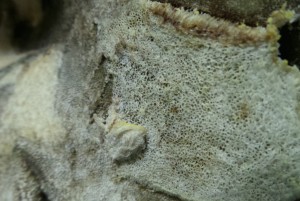To devalue the horn, it is treated by infusing it with a compound made up of ectoparasiticides and indelible dye that contaminates the horn and renders it useless for ornamental or medicinal use. A full DNA sample is harvested and three identification microchips are inserted into the horns and the animal itself. We are continuously working to improve the chemical compounds injected into the horn to make sure that the compounds selected infuse most of the horn material and offer the best possible chance of devaluing horns from the user’s perspective.
Our newly improved infusion process utilises very high pressures and a custom designed non-return valve that prevents the liquids from exiting through the drill hole(s) after the 10-15 min infusion has been completed. In addition, the non-return valve keeps the liquid in the horn under around 30 bars pressure for up to 10 days, ensuring that the liquid penetrates large areas of the internal horn structure.
In contrast to some misleading reports in the South African media, rhino horn is not at all like perspex. It is in fact made up of a tubular structure, which can be readily infused under high pressure (click on the images to enlarge):


The Rhino Rescue Project horn treatment should remain effective for approximately three to four years (a full horn growth cycle), after which re-administration would be required. The products we use are all eco-friendly and biodegradable, so there are no adverse effects on the environment.
Only ox-pecker friendly and vulture safe products have been used. Ectoparasiticides are not intended for consumption by humans, and are registered as such. Although not lethal in small quantities, they are toxic, and symptoms of accidental ingestion may include, but are not limited to, severe nausea, vomiting and convulsions (all dosage-dependent).
There is no risk to the animal from the procedure, only the normal risk associated with immobilization of large animals like rhinos. To date, losses of treated rhinos (to poaching or otherwise) total less than 2% of all animals treated. Furthermore, the animals we treated are in excellent health. Several cows that were pregnant at the time of treatment gave birth to healthy calves, all of which lactated normally. Owners of treated rhino on other reserves have also reported no negative effects and were satisfied with the decrease in poaching on their properties.